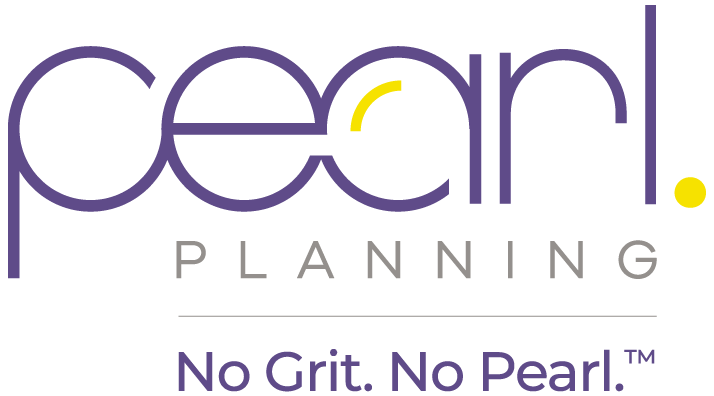If you've heard of a Backdoor Roth IRA but find the details confusing, you're not alone! At Pearl Planning, we frequently recommend this strategy to clients who earn too much to directly contribute to a Roth IRA but still want the benefits of tax-free growth. Today, let's dive into exactly how a Backdoor Roth IRA works, the critical importance of recordkeeping, navigating the pro-rata rule, and how to correctly file your taxes, including Form 8606.
What is a Backdoor Roth IRA?
A Backdoor Roth IRA is not a separate retirement account but rather a method of indirectly getting money into a Roth IRA when your income is otherwise too high for a regular Roth contribution. Here's the simple version:
- Step One: Ensure you have no other IRA accounts. Typically, your other retirement assets would be in company retirement plans like 403bs and 457s, or everything else would-be Roth assets. (See the section below on Understanding the Pro Rata Rule.)
- Step Two: Make a non-deductible contribution to a Traditional IRA. This contribution doesn’t give you a tax break because your income is too high. For 2025, you're over the limit if your modified adjusted gross income (MAGI) is over $89,000 as a single person or $146,000 for married filing jointly. NOTE – this strategy may be impossible if you’re married filing single.
- Step Three: Convert those funds to a Roth IRA shortly after contributing.
Since your initial contribution is after-tax (meaning it does not give you a tax break), you typically pay little or no additional taxes on the conversion if it is handled properly.
The Importance of Keeping Good Records
Keeping thorough records is vital when executing a Backdoor Roth IRA. Here's why:
- Document Contributions Clearly: Always track your non-deductible IRA contributions. If you lose track of these, you risk paying unnecessary taxes during conversion.
- Form 8606: Each year you make nondeductible contributions or perform a Roth conversion, you'll file Form 8606 with your taxes. This form tracks the basis (the after-tax amount you've contributed) and ensures you're not taxed twice.
- Tax Documents from Closed IRAs: Even if your Traditional IRA is fully converted and closed, you'll still receive important tax documents (1099-R for the Traditional IRA distribution and Form 5498 for your Roth IRA contributions or conversions). You'll need these documents when filing taxes the following year.
Understanding the Pro-Rata Rule
One major pitfall of the Backdoor Roth strategy is misunderstanding the pro-rata rule. This rule states that if you have other IRA balances—such as a rollover IRA or any pre-tax IRA—you must consider all your IRA balances collectively when calculating taxes due on your conversion.
Here's a quick example:
- Suppose you have $6,000 of non-deductible contributions and $54,000 of deductible (pre-tax) IRA balances.
- When converting $6,000 to Roth, the IRS views it as 10% after-tax and 90% pre-tax (pro-rata based on your total IRAs).
- This means only $600 (10%) is tax-free, and $5,400 (90%) is taxable.
To avoid surprises, carefully assess your IRA accounts or talk with your financial planner before implementing this strategy.
Filing Taxes Correctly: How Form 8606 Works
When performing a Backdoor Roth IRA conversion, your custodian will send you a Form 1099-R showing the conversion amount as taxable. Don't panic, this doesn't mean you owe taxes. You must:
- Complete Form 8606 to report your non-deductible IRA contributions.
- Form 8606 calculates your actual taxable amount, considering your IRA balances.
- Enter the results from Form 8606 onto your Form 1040, adjusting line 4b (taxable IRA distributions).
Correctly completing Form 8606 ensures you don't pay unnecessary taxes. If you're unsure, professional help from your financial advisor or CPA is worth every penny.
Key Takeaways for Your Backdoor Roth IRA Strategy
- Recordkeeping is crucial: Document your nondeductible IRA contributions and Roth conversions clearly.
- Be aware of the pro-rata rule: Review all IRA balances carefully or consult your financial advisor before converting.
- Form 8606 is your friend: Accurately filing this form yearly will prevent unnecessary taxation.
When executed properly, the backdoor Roth IRA is a powerful planning tool. With solid recordkeeping, careful planning, and a clear understanding of the rules, you can confidently harness the long-term benefits of tax-free growth.
If you have questions about your situation or how to make the Backdoor Roth work best for you, contact the Pearl Planning team—we're here to guide you every step of the way!


